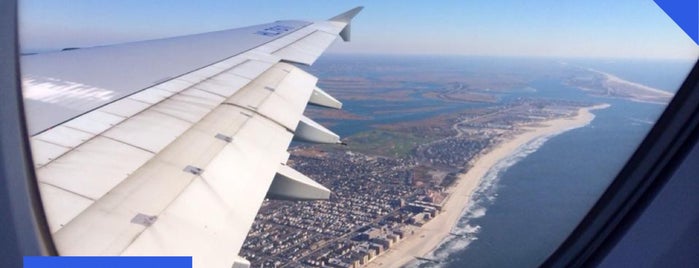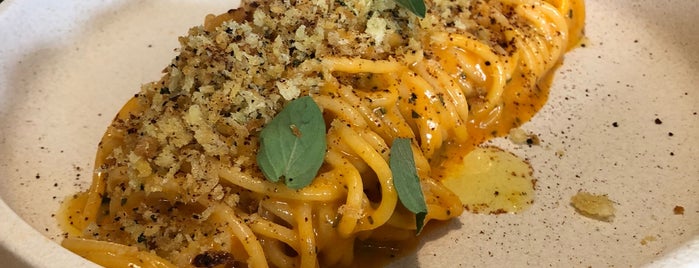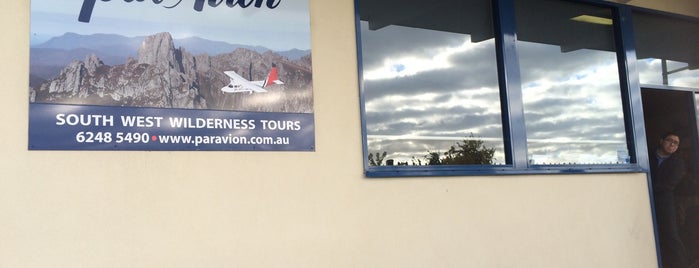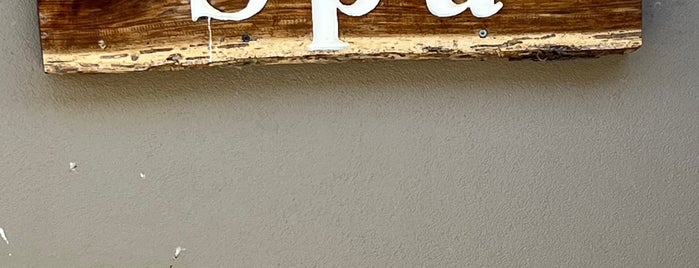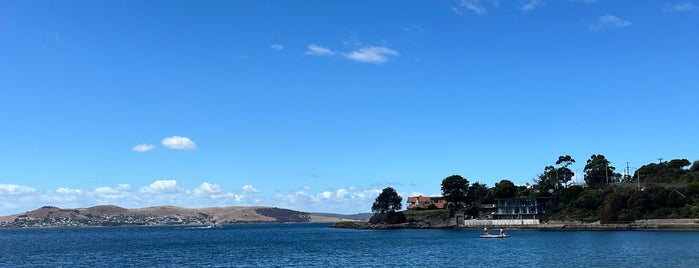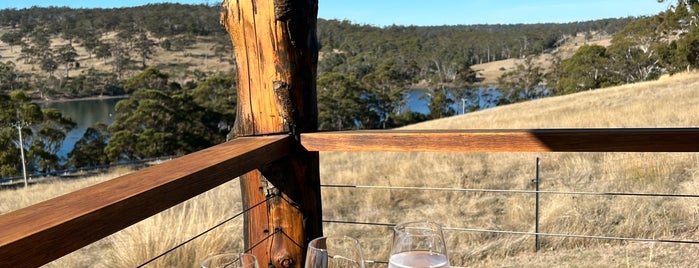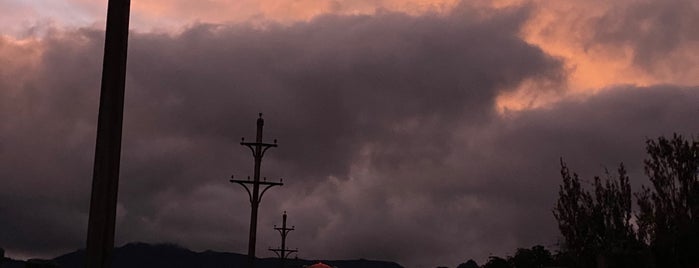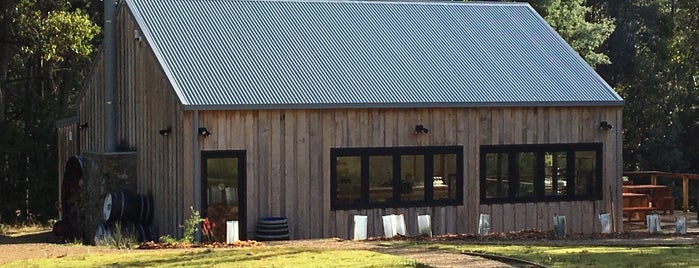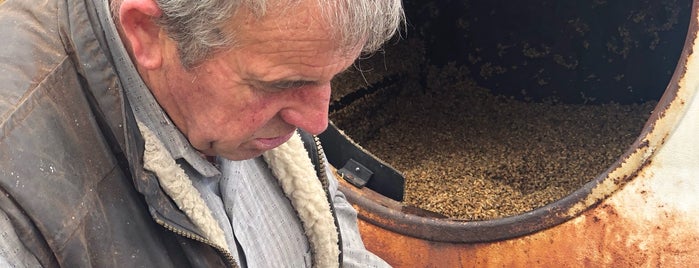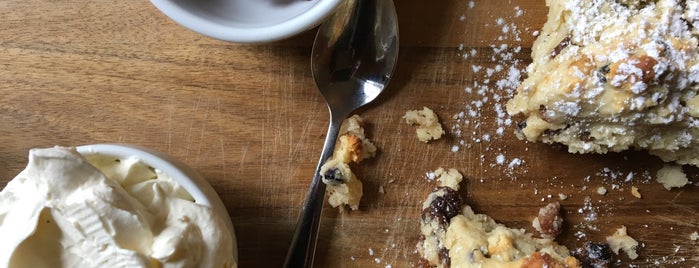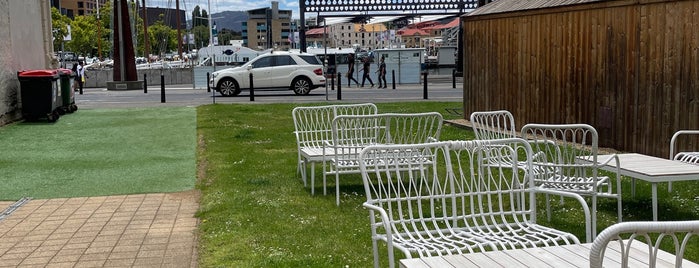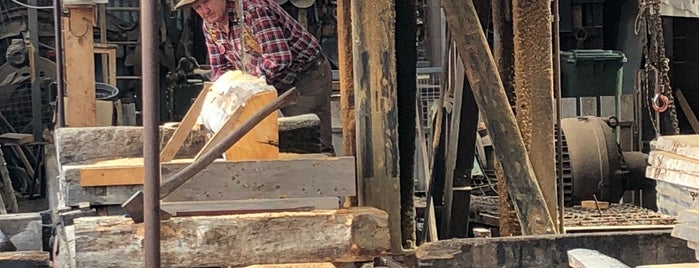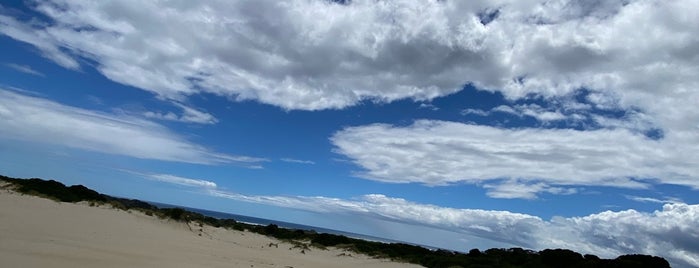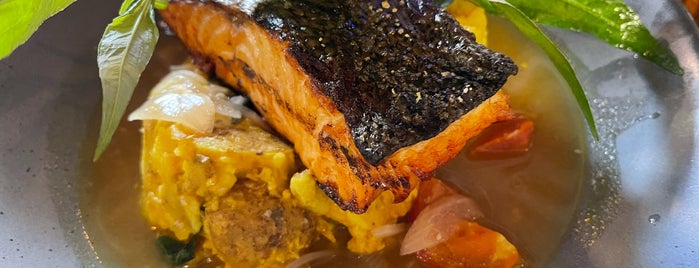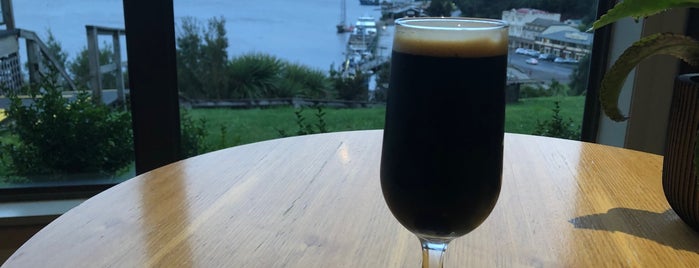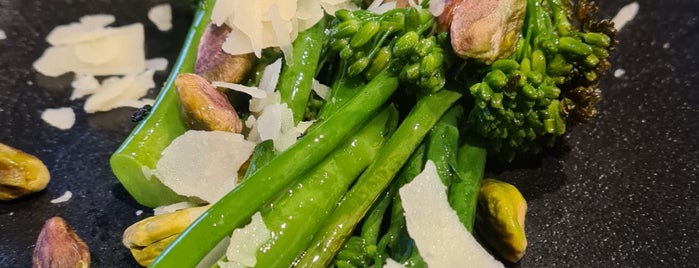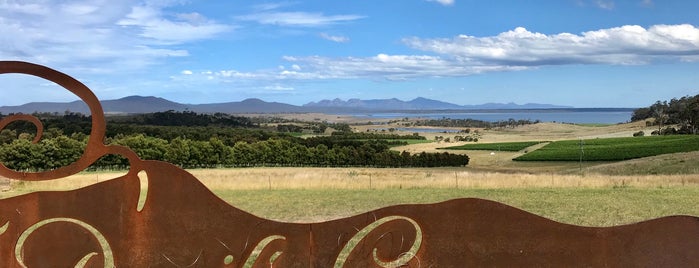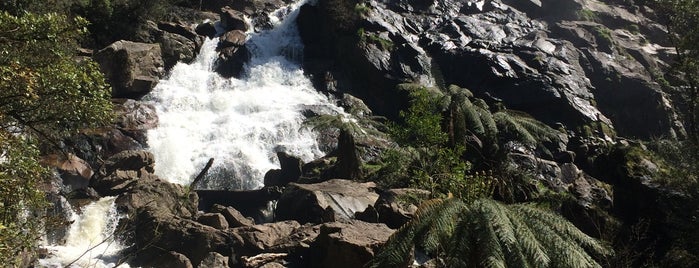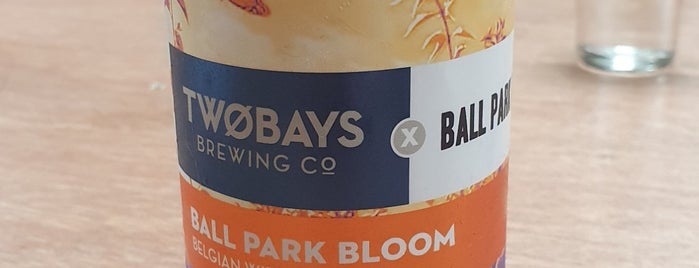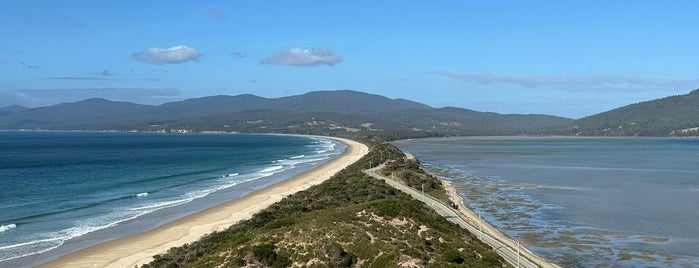W: Our favourite museum, Mona, is set to welcome a new and wondrous exhibition which has been selected and curated by The Museum of Everything—the world’s first wandering institution, aimed at exhibiting the untrained, unintentional, undiscovered and unclassifiable artists of the nineteenth, twentieth, and twenty-first centuries. The grand opening of The Museum Of Everything takes place on Saturday 10 June (to coincide with the start of Dark Mofo) and continues until Monday 2 April 2018.
W: We all know that winter and whisky go together like cheese and wine, so we’re always going to be big advocates of anything remotely malt related. One of Tassie’s top distilleries, Hellyers Road, offers an intimate, behind-the-scenes insight into the process that goes into making their much-loved whisky. You’ll have the chance to smell the ingredients used, see the latest batch distilling, visit the bond store filled with American oak barrels and meet Henry Hellyer himself – the man behind brand.You’ll also have the opportunity to pour and wax-seal your very own bottle of Hellyers Road. A fully-guided tour takes around half an hour and set you back just $17.50 per person. We recommend you visit during Tasmanian Whisky Week for the ultimate whisky lovers trip. From 4-13 August, distilleries across the island will be opening their doors to host special behind the scenes tours and events.
W: Southern Tasmania’s coastline really is next-level wilderness. Home to the highest sea cliffs in the southern hemisphere, it’s a mesmerising sight, particularly in the ruggedly beautiful conditions of a Tassie winter. The best way to see the region is by boat. Pennicott Wilderness Journeys offer a range of tour options and have custom-built boats that are ideal for viewing the coastaline, which is all part of the Tasman National Park. The coastal area is also home to a huge variety of marine wildlife including hundreds of seals, migrating whales, and sea birds in their thousands.Choose the Bruny Island Cruise or Tasman Island Cruise during whale migration (June to September); it’s one part eco cruise and two parts high-speed whale tracking adventure.
W: Keen to see the stunning World Heritage region in winter, but not busting to trek to do it? Yeah, we feel ya’. Par-Avion Wilderness Tours to the rescue! Taking off from Cambridge airport just outside Hobart, you'll fly over the D’Entrecasteaux Channel, past the mouth of the Huon River and head south west over the World Heritage Area at Tasmania’s most southern point. You'll then land at Melaleuca, where you'll jump on a boat and head into Bathurst Harbour to experience the wilderness from sea level. There will be plenty of time to explore and you're guaranteed to catch some world-class Insta ops. The flights are around 50 minutes each way and the whole adventure will take approximately five hours.
W: The Barnbougle Spa on Tassie’s north east coast offers up our dream spa-treatment—vinotherapy! As the name suggests, vinotherapy is a treatment that uses the residue of wine making. The pips and pulp are rubbed into the skin and are said to have excellent exfoliating and anti-aging qualities. Barnbougle’s treatment lasts three hours and includes vinotherapy, plus an all-over body polish and a thermal face lift with warm infusing mask. It’s all to maximise the penetration of essential vitamins and minerals deep into the skin. Basically, we take this as a red wine and facial beauty treatment. Heaven officially exists.
W: Every year, hundreds of brave souls head to Long Beach on the banks of the Derwent River in Hobart on the morning after the longest night of the year. There they shed their clothes and inhibitions and run into the icy depths of the river. The Nude Solstice Swim has become a ritual event (and cheeky highlight) of the Dark Mofo calendar. It’s a free event, but you have to register beforehand.
W: Nothing screams ‘winter adventure’ more than a trek through the snow, on one of the world’s best bush walking tracks. Tasmania’s Overland Track, which runs between Cradle Mountain and Lake St Clair is a hive of activity during the warmer months, but offers a whole new sense of serenity and adventure in winter as mountain ranges receive a generous dusting of snow.While it’s not for the faint hearted, experienced adventure tour company Tasmanian Expeditions run top-notch guided tours, complete with quality snow shoeing and camping gear. The guides really bring the finer details of the Overland Track to life.
W: The largest range of Tasmanian single malts and an open fireplace are two very good reasons to visit Bruny Island House of Whisky.
W: Once a hydro-electric pumphouse, Pumphouse Point now offers luxury accommodation in the Cradle Mountain-Lake St Clair National Park. Its two staff-free “honesty bars” are the perfect setting to enjoy a dram of local whisky.
W: Australia’s southern most distillery, located near the historic town of Port Arthur. The site has everything required to make quality whisky: access to quality grain, water that is clear, pure, and soft, and a cool, temperate climate.
W: Visits by appointment only. North of Hobart, sustainability guru Peter Bignell uses a bio-diesel powered still claimed to be the only one in the world, to make Australia’s only rye whisky.
W: Like Belgrove, Redlands Distillery in Kempton is a pioneer of the paddock-to-bottle movement, and grows its own barley on-site.
W: In Cambridge near Hobart Airport. In 2014, the whisky was named the best single malt in the world, and in 2015 the Craft Distiller of the Year.
W: It’s currently making around 300 barrels of whisky a year and employs more than 30 people. In 2015, Lark – widely recognised as the godfather of the Tasmanian whisky industry – travelled to London to be inducted into the Hall of Fame at the World Whisky Awards.
W: Ever walked through a 100 metre long abandoned railway tunnel? For the start of the walk, head north towards the end of town and turn left onto Fowler Street and follow it to the end past the golf course. Pick up a narrow, winding road through the bush for ~2km. Park your car and head into the tunnel, keeping your eye out for glow-worms (and spiders). There's an informative interpretation board at the car park displaying historical information about the mine and tunnel.Once through the tunnel you'll find the relics of buildings and abandoned boilers – a reminder of the West's mining past.The tunnel was carved through the hill so that ore could be moved from the mine. The tunnel is unusually shaped like a keyhole, approximately 3 metres high and 2.2 metres wide and 100 metres long. This was once part of the mine that spread 80 acres into the surrounding hills Built in 1887, when silver-lead ore was found here in 1900, it led to Zeehan becoming a boom town known as "Silver City". At one point its population pea
W: It was a tough life for the early Tasmania timber workers who felled Huon Pine along the Dennison, Gordon and Franklin rivers. Their spoils would be floated downstream to Macquarie Harbour, tied together, then rafted across to the seaside township of Strahan. In summer, the water level in the rivers would often be too low to float the logs, so they'd be left in the riverbed until the next flood picked them up and washed them downstream. Morrison's Huon Pine Sawmill remembers and bears traces of this life. A huge vertical frame saw dating from the 1800s sits pride of place in the mill and has been there since 1940 when 3 brothers Morisson set up their Huon Pine business on the Strahan wharf. Here you can see the original derrick crane that hoisted logs off the rafts and into the mill to be cut up and shaped, mostly to build boats, and a demonstration of the saw in action every day at 3pm. There's a short film showing the life of the early timber workers and you can see historic photographs that give stark sens
W: 15 minute drive north of Strahan. These huge natural features are the largest sand tunes in Tasmania, with some stretching up to 30m high. They were carved in part by the vicious "Roaring 40s", winds that whip up across the ocean and smash onto the West Coast, and are part of an important geological formation that was formed within the last 10,000 years. It's the perfect place for invigorating and cheap day out. Hire a toboggan in Strahan and ride it down the dunes. There are many culturally significant Aboriginal sites here, including middens, as well as nests for the many shorebirds that live here, so care and respect for this unique place should always be shown Tip: there are no shops, water or toilet facilities.
W: The West Coast railway line opened in 1987 as a means to transport copper from Queenstown to the port of Strahan up, and over the mountainous, wet countryside. It ran continuously until 1964, when the development of better roads into the West Coast meant that there was less need for the railway and it fell into disrepair. But in the mid 90s, the state and federal governments committed money to help rebuild the railway, and it opened again in 2001 as a tourist attraction. The original steam engines are still used, and you travel in comfort with food, drinks service and historical commentary along the way. Winter tours leave from Queenstown and Strahan, on alternate days, travelling to the halfway point of Dubbil Barril then returning (~4 hour trip). The railway celebrates Christmas in July, with mulled wine and mince pines, and when the steam looks best.
W: Miners and piners were a thirsty lot. Here you'll find Tasmanian beer on every tap and world-class whisky to warm the winter cockles.
W: No-nonsense, tasty homemade fare that caters for all dietary requirements.
W: Kayak or take a boat cruise. To the far right of Great Oyster Bay, you'll see a little old shed. Inside are kayaks free for guests to use on the clear waters.
W: There's plenty to do in this stunning parcel of wilderness on the East Coast, just make sure you've had enough time to explore it. Book a return trip aqua taxi from Coles Bay to Hazards Beach and walk across to Wineglass Bay. (Tip: purchase your National Parks pass online prior to boarding.) When the aqua taxi returns you, relax with a whisky by the fire at Freycinet Lodge. If you prefer to get up close with the area's abundant marine life, weave along the coastline on a kayak at twilight with Freycinet Adventures.
W: Drive 10 minutes from Pyengana Dairy, park the car and walk the 600m track under rainforest canopies towards the sound of the rushing water. There you'll find St Columba Falls, one of Tasmania's highest multi-tiered waterfalls. A viewing platform makes an ideal sport to appreciate the waterfall's full power and force particularly after decent rainfall.
W: Each evening from dusk, hundreds of penguins return from a day of feeding and settle into their burrows. Thanks to two surfing mates, Paul Male and Nic Wardlaw, who established the Bicheno Penguin Tours in the early 90s, you can safely get up and close and watch as the birds swim into shore and waddle up the sand. The hour-long penguin tour leaves at dusk from Bicheno. You'll be driven out to the private beaches and quietly led by one of the guides to carefully spot the cute and fluffy penguins. If you stand still enough, you may even have one walk right under your legs.
W: Showcasing wine from 18 vineyards on Tasmania's East Coast, ripe for curling up with and unwinding.
W: Black truffles thrive in a clean and cold environment, and winter time in Tasmania provides ideal conditions. Truffles of Tasmania produces a truffle with uniquely strong and sweet aroma, making it highly sought after internationally. From June to September, you can join the team on a tour of the grounds to learn about the rare black perigord truffles. Hunt for them with prized truffle-hunting dogs and then, if you're lucky, purchase them to eat for yourself. Daily tours through winter by appointment only.
W: Every Saturday morning in transformed carpark. Stuff your bags with the freshest winter produce, purchased straight from the grower. Stock-up on seasonal fruit (e.g. apples, pears and lemons) and leafy greens. Wander with a coffee, cider, kombucha or a handcrafted beer, and choose from a selection of organic sourdough breads, Tasmanian cheeses, and homemade preserves, to enjoy your very own platter by the fire.
